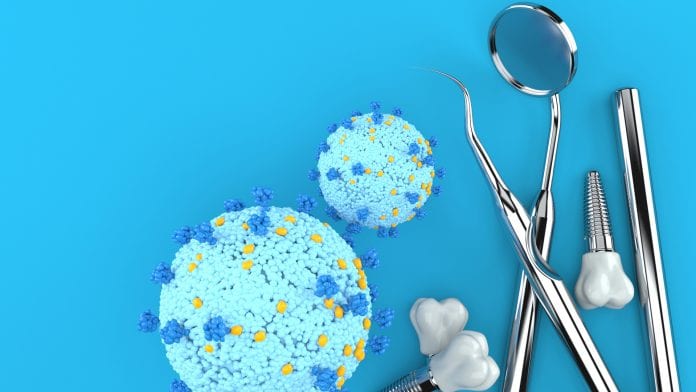
New research is being used to shape how dentistry can be safely carried out during the COVID-19 pandemic.
The novel coronavirus is easily spread in airborne particles, moving around rooms to infect people, which has been a major consideration when shaping public policy in response to the crisis, and for patient and clinician safety. Now, new research from Newcastle University is leading the way in helping shape national clinical guidance to allow dentists to work safely and effectively during the pandemic.
The findings have been published in the Journal of Dentistry and have been used by the Dental Schools’ Council, Association of Dental Hospitals, and the Scottish Dental Clinical Effectiveness Programme to guide key COVID-19 policies for the profession.
Kimberley Pickering, a research dental nurse involved in the study, said: “For the safe re-opening of dental services, it was essential to understand the behaviour of the aerosols that come out of a patient’s mouth during dental work. We now better understand where the aerosols go and how far they travel during different procedures and settings.
“We also understand how dental aerosols settle over time, which has helped inform cross-infection control procedures.”
Aerosol generating procedures
When dentists carry out aerosol generating procedures, such as root canals, research has shown they can spray aerosol and saliva particles from dental instruments across large distances with contamination varying depending on the processes used.
According to the findings of this research, in open clinic settings, dental suction substantially decreased contamination at sites further away from the patient, such as bays five metres away. Often these distant sites had no contamination present or if contamination was detected it was at very low levels, diluted by 60,000 – 70,000 times.
It also found that after ten minutes, very little additional contaminated aerosol settled onto surfaces and therefore that is a suitable time to clean a surgery after an aerosol-generating procedure.
Dr Richard Holliday, NIHR Clinical Lecturer in Restorative Dentistry at Newcastle University, UK, said: “Our research has improved our understanding of dental aerosol generated procedures and identified how cross-contamination could be a risk for spreading COVID-19. When the pandemic began, dental services were significantly reduced and there was an urgent need by the profession to focus on how dental clinics could work in a safe environment for patients and staff.
“We now have a much greater understanding of where the splatter of aerosols go and how far they travel during different procedures and settings, allowing clinical teams to make informed decisions to protect people. I am pleased that our research here at Newcastle has been used nationally by leading dental bodies to inform their policies on how the profession should carry out procedures during the pandemic.”
Newcastle University’s School of Dental Sciences is one the first universities in the country to recommence teaching aerosol-generating procedures to students in person during the pandemic.
Experts will now also look at how long aerosols hang around in the air and examine a number of common dental procedures and methods of controlling aerosols.
A key part of the research will investigate if viruses can be carried in dental aerosols, and if viruses remain infective at a distance from the procedure. This will help experts to understand how to reduce the risk of microbes, like COVID19, being spread by aerosols during dental treatment.
























